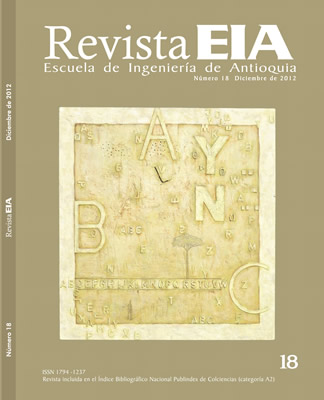EFECTO DEL CONTENIDO DE CARBONO SOBRE LA RESISTENCIA AL DESGASTE ABRASIVO DE RECUBRIMIENTOS DE CrC DEPOSITADOS POR PULVERIZACIÓN CATÓDICA MAGNETRÓN (EFFECT OF THE CARBON CONTENT IN ABRASIVE WEAR RESISTANCE OF CrC COATINGS DEPOSITED BY MAGNETRON SPUTTE)
EFECTO DEL CONTENIDO DE CARBONO SOBRE LA RESISTENCIA AL DESGASTE ABRASIVO DE RECUBRIMIENTOS DE CrC DEPOSITADOS POR PULVERIZACIÓN CATÓDICA MAGNETRÓN (EFFECT OF THE CARBON CONTENT IN ABRASIVE WEAR RESISTANCE OF CrC COATINGS DEPOSITED BY MAGNETRON SPUTTE)


This work is licensed under a Creative Commons Attribution-NonCommercial-NoDerivatives 4.0 International License.
Copyright statement
The authors exclusively assign to the Universidad EIA, with the power to assign to third parties, all the exploitation rights that derive from the works that are accepted for publication in the Revista EIA, as well as in any product derived from it and, in in particular, those of reproduction, distribution, public communication (including interactive making available) and transformation (including adaptation, modification and, where appropriate, translation), for all types of exploitation (by way of example and not limitation : in paper, electronic, online, computer or audiovisual format, as well as in any other format, even for promotional or advertising purposes and / or for the production of derivative products), for a worldwide territorial scope and for the entire duration of the rights provided for in the current published text of the Intellectual Property Law. This assignment will be made by the authors without the right to any type of remuneration or compensation.
Consequently, the author may not publish or disseminate the works that are selected for publication in the Revista EIA, neither totally nor partially, nor authorize their publication to third parties, without the prior express authorization, requested and granted in writing, from the Univeridad EIA.
Show authors biography
Los recubrimientos de carburo de cromo sobre acero son un buen candidato para aplicaciones de conformado y moldes de inyección. La alta resistencia mecánica, resistencia química y estabilidad a alta temperatura de la fase Cr3 C2 pueden ser compatibles con el intenso desgaste abrasivo y la corrosión en tales operaciones de fabricación. En este trabajo se depositaron recubrimientos de CrC por pulverización catódica magnetrón RF, los cuales mostraron contenidos de carbono entre el 25 % y el 58 % por análisis EDS. Los valores de dureza de estos recubrimientos fueron entre 15 y 24 GPa; los más duros de las muestras tuvieron contenido de carbono en el rango de 39-53 %. El desgaste abrasivo de los recubrimientos se evaluó utilizando un equipo de disco abrasivo con polvo de diamante. El volumen de las huellas de abrasión se midió con las imágenes obtenidas en el microscopio interferométrico y además se corroboró con el cálculo del volumen geométrico basado en secciones medidas con el perfilómetro. El comportamiento al desgaste abrasivo mostró una marcada dependencia con el contenido de carbono. El desgaste abrasivo más bajo se obtuvo para los recubrimientos con el más alto contenido de carbono.
Abstract:Chromium carbide coatings on steel are a good candidate for applications on forming and molding dies. The high mechanical strength, chemical resistance and high temperature stability of Cr3 C2 phase can be compatible with the severe abrasive wear and corrosion found in those manufacture operations. In this work chromium carbide coatings deposited by means of RF magnetron sputtering showed carbon contents between 25 % and 58 % by EDS analysis. Hardness values of these coatings were between 15 and 24 GPa, being the hardest values in the samples with carbon content in the 39-53 % range. The abrasive wear behavior of the coatings was evaluated by using a dimple grinder with diamond powder. The volume of the abrasion craters was measured from the images obtained with the interferometric microscope, and further corroborated by geometrical volume calculation based in profilometer sections that were measured. Abrasive wear behavior showed a marked dependence with carbon content. The lowest abrasive wear was obtained for the coatings with the highest carbon content.
Article visits 266 | PDF visits 154
